calsfoundation@cals.org
Edwin Eagle Dunaway (1915–1994)
Edwin Eagle Dunaway was a lawyer and politician who was a rare unabashed champion of racial equality in the days of total segregation in Arkansas, before and after the historic desegregation crisis at Central High School in Little Rock (Pulaski County) in 1957–1959. He served in the Arkansas General Assembly for three terms before and during World War II, was elected prosecuting attorney twice, served more than a year as a justice of the Arkansas Supreme Court, and taught law at the University of Arkansas School of Law in Fayetteville (Washington County). He established important civil-liberties laws by taking unconstitutionally coercive acts passed by the Arkansas legislature to the U.S. Supreme Court, where they were nullified.
Edwin Dunaway was born on February 28, 1915, in Little Rock to Maude Edwin Dunaway and Bessie Eagle Dunaway. His father was a lawyer who often represented labor clients, served in the Arkansas House of Representatives in 1909–10, and was prosecuting attorney for the Sixth Judicial District for four years. Edwin’s great-uncle, James P. Eagle, was a Confederate war hero who later served two terms as governor and became a preacher and the leading figure in the Baptist church in Arkansas. One of Dunaway’s grandfathers, John D. Dunaway, was both a member of the Arkansas legislature and a delegate to the 1874 Constitutional Convention. The other, William H. Eagle, was one of the wealthiest men in Lonoke County and also served several terms in the state legislature.
Dunaway graduated from Little Rock High School with high honors and was awarded an honors scholarship to Columbia University in New York City. As a senior, he was chosen as the graduate who had “done the most for Columbia” and was active in liberal causes. He won another honors scholarship to the Columbia School of Law and was editor of the Columbia Law Review.
Dunaway returned to Arkansas and joined the state’s oldest law firm, now commonly called the Rose Law Firm, founded in 1820 by Robert Crittenden. He joined the Urban League, the oldest civil-rights organization in the country, and in 1939 became active, with Adolphine Fletcher Terry, in seeking better housing for African Americans. They persuaded the city to create a housing authority to obtain federal aid to replace the worst slums with modern housing projects, but the city installed the head of the Little Rock Realtors Association as the chairman. They also lobbied the city to develop a quality park for Black residents. In response, the city used bond funds for a small remote park to keep Black residents in the far southern corner of the city and to discourage them from seeking homes outside this area.
In 1940, Dunaway ran for a seat in the House of Representatives and won. After World War II began, Dunaway enlisted in the U.S. Navy and was assigned to a battleship in the Atlantic as a communication officer, but the navy allowed him leave in January and February of odd-numbered years so that he could return to Little Rock and fulfill his duties as a lawmaker. Dunaway said his only wartime injury was falling out of his top bunk on the battleship and breaking an ankle. At the war’s end, he was on the staff of General Douglas MacArthur preparing for war-crimes trials in the Pacific.
Like many young veterans of the war who came home invigorated by their service to enter politics and clean up the democracy, Dunaway returned with a fresh zeal for reform, having observed the racial motivations of the Axis powers and the discrimination against Blacks in America’s own armed forces. He soon joined the first big racial and labor struggle after the war. It began with a strike of mostly Black employees at the unionized Southern Cotton Oil Mill in Little Rock, which made shortening and cooking oil. Antiunion forces pushed an act through the legislature in 1943, over Dunaway’s opposition, that made violence during a strike a crime—but only by the striking union members and officials, who were deemed by the law always to be the culprits responsible for any violence. A strikebreaker stabbed a striker to death at the plant, but the prosecuting attorney, Sam Robinson, prosecuted union officials for the crime, as the law seemed to require. When they were convicted, L. C. and Daisy Bates, who ran the Black newspaper in Little Rock, ridiculed the convictions. The trial judge held the couple in contempt of court and fined them. Dunaway represented them, and the Arkansas Supreme Court overturned the contempt citation. Dunaway became Daisy Bates’s only trusted white friend. Their close relationship continued through the school crisis more than a decade later.
As a state lawmaker, Dunaway had introduced the so-called “little Norris-LaGuardia Act,” a state version of the 1932 congressional act that prohibited certain restraints on union organizing. Dunaway thought that a literal reading of the First Amendment was that workers should have the right of association to organize and join unions unfettered by government or employers. In 1946, Dunaway ran against Prosecutor Sam Robinson in the Democratic primary, and the campaign for the first time aligned African Americans and unions against business leaders and segregationist and antiunion groups. Dunaway won.
Dunaway formed a natural friendship with the World War II U.S. Marine hero Sid McMath, the anticorruption crusader in Hot Springs (Garland County) who was elected prosecuting attorney the same year as Dunaway. Dunaway supported McMath in the governor’s race in 1948, and the governor appointed him the next year to the Arkansas Supreme Court when Justice Frank G. Smith retired. After his term on the Supreme Court ended, Dunaway taught constitutional law at the University of Arkansas School of Law for a time and then returned to practice law at Little Rock.
In 1953, Dunaway formed a lasting friendship with a displaced New Yorker, Winthrop Rockefeller, who came to Arkansas to visit an old army friend, Frank Newell. He was also seeking a place to get a quick divorce, and Arkansas laws seemed suitable for that. Rockefeller decided instead to move to Little Rock and then to purchase land on Petit Jean Mountain, which he would turn into a showplace farm and ranch. Newell and Dunaway were friends, and Dunaway became Rockefeller’s lawyer. He filed the divorce suit for Rockefeller and became a regular part of the divorce war in New York newspapers. Dunaway liked to recall a day when he was in Manhattan and saw his name flash up on the famous news ticker on Times Square reporting a remark that he had made about the divorce. Rockefeller’s wife, Barbara “Bobo” Sears Rockefeller, had rejected Dunaway’s proffer of a $5.5 million settlement, and Dunaway said there was no way they could meet her “insatiable demands.” Ultimately, the Rockefeller divorce was finalized in Reno, Nevada. Dunaway became a confidante, attorney, and adviser to Rockefeller, although he spurned Rockefeller’s urging that he become a Republican.
In the days before and after Governor Orval E. Faubus used the National Guard to thwart federal court orders and block nine Black students from entering Central High School, Dunaway conferred with Rockefeller, McMath, and Harry S. Ashmore, executive editor of the Arkansas Gazette, about how to discourage Faubus from taking these actions. Rockefeller met with Faubus by telephone or in person several times about steps that he could take to preserve his political viability without violating federal court orders. After the violence at the school, Dunaway and Daisy Bates, the advisor for the Little Rock Nine, conferred futilely with the FBI in Little Rock, the U.S. Justice Department in Washington DC, and other law enforcement agencies about how to protect the students, whom they feared might be killed.
In 1970, by then four years out of office, Faubus made a comeback, hoping to beat Rockefeller, the two-term Republican governor. In his televised announcement, Faubus claimed that a few months after he had become governor in 1955, he attended a meeting at Rockefeller’s Petit Jean home on Rockefeller’s invitation. There, eleven “big shots,” including Dunaway, McMath, and the editor and the publisher of the Arkansas Gazette, explored the idea of setting up a secret state government with a liberal agenda that would make all the important decisions. He said the plan for a shadow government seemed to have been formulated by Ashmore, Gazette publisher Hugh Patterson, and Dunaway. Faubus had never mentioned such a meeting before, even in his own campaign against Rockefeller in 1964. Nine of the eleven people Faubus said were at the 1955 meeting and were still alive in 1970 said the meeting never occurred, one friend of Faubus sort of remembered such a meeting, and another declined to comment. Dunaway said he had never met with such a group anywhere or anytime. Faubus’s charges about a shadow government involving Dunaway, Rockefeller, and others seemed to gather no currency in the 1970 campaign, and he did not bring it up again. Faubus lost the primary to Dale Bumpers.
In the heated political climate after the U.S. Supreme Court’s decision in Brown v. Board of Education in 1954 that the U.S. Constitution required integration of the public schools, Dunaway was unabashed, taking the position that the Supreme Court had simply done what it should have done in Dred Scott v. Sandford (1857), Plessy v. Ferguson (1896), and other cases: declare that racial discrimination in all its forms violated the Declaration of Independence and the Bill of Rights. In 1956, Dunaway joined Bill Penix of Jonesboro (Craighead County) and James F. Sloan of Walnut Ridge (Lawrence County) in defending the Hoxie School Board’s decision to consolidate the schools’ approximately 1,000 white students and twenty-one Black students in integrated classes. State Senator Jim Johnson and leaders of Arkansas white citizens’ councils, joined by amicus briefs from other Southern states, had sued to block the integration at Hoxie by invoking Article IV, Section 4 of the U.S. Constitution, which they said protected a state’s republican form of government from the tyranny of the U.S. Supreme Court. In Brewer v. Hoxie School District No. 46, the Eighth U.S. Circuit Court of Appeals ruled that Dunaway and his clients were bound by the Fourteenth Amendment to integrate the schools. The decision ended the Southern case for interposition.
Dunaway made his most important contribution to federal civil-liberties precedents in two suits that arose from acts of the legislature and the governor after the Central High crisis. The legislature passed a number of segregation bills authored by Attorney General Bruce Bennett and signed into law by Faubus. One was Act 10 of 1958, which required every employee of Arkansas public schools and colleges to sign an affidavit every year listing organizations of which they were members or contributors. It was aimed at ferreting out teachers who supported the National Association for the Advancement of Colored People (NAACP) or other organizations supporting integration. Dunaway filed suits in state and federal courts to strike down the law as a violation of the Fourteenth Amendment’s guarantee of equal protection of the laws for everyone. The Arkansas Supreme Court and a panel of federal judges upheld the law. The cases were consolidated on appeal, and in the case B. T. Shelton, et al., v. Everett Tucker Jr., et al., the U.S. Supreme Court split five to four but concurred with Dunaway that the act violated the Fourteenth Amendment.
In a separate case flowing from a 1961 legislative act, Dunaway and his law partner, Robert C. Downie, defended several merchants at Pine Bluff (Jefferson County) who were ordered to stop selling so-called “girlie” magazines, which displayed photographs of naked women. Act 261 purported to remove obscenity from the newsstands of Arkansas. It described such magazines as obscene and made it a felony to distribute them. Dunaway’s suit, Gent v. State, was tried in Jefferson Circuit Court, which upheld the statute, appealed to the state Supreme Court, which upheld it five to two, and eventually appealed to the U.S. Supreme Court. Attorney General Bennett, joined by the state’s largest law firm, the Friday firm, and Pine Bluff’s leading attorney, Louis Ramsey, argued for the law’s constitutionality. The U.S. Supreme Court did not rule that the act was unconstitutional but applied Dunaway’s theory that the lower courts had mistakenly allowed community standards of obscenity to replace the standards set by the U.S. Supreme Court. Act 261 was never again implemented.
Dunaway was appointed by Governors Dale Bumpers, David Pryor, and Bill Clinton as chairman of the state Board of Review, which adjudicated disputed claims for unemployment benefits. During the school-crisis period, he was a founder and member of the Arkansas Council on Human Relations, chairman of the Urban League of Greater Little Rock, and a member of the Board of Trustees of Philander Smith College.
In 1993, he was named Civil Libertarian of the Year by the American Civil Liberties Union of Arkansas to recognize his lifetime contributions to civil rights and civil liberties. He died on September 27, 1994. He had maintained the family’s loyalty to the Southern Baptist Church, although he joined its liberal congregation, the Second Baptist Church, where his funeral was held. He is buried in Roselawn Cemetery.
For additional information:
Bates, Daisy. The Long Shadow of Little Rock: A Memoir. Fayetteville: University of Arkansas Press, 1986.
Dumas, Ernest. “Faubus Names 11 at Secret Meet; 8 of 9 Insist It Never Took Place.” Arkansas Gazette, May 30, 1970, p. 1A, 2A.
Obituary of Edwin Eagle Dunaway, Arkansas Democrat-Gazette, September 29, 1994, p. 6B.
Parker, Suzi. “Edwin Eagle Dunaway: Proud Southern Lawyer Fought for the Civil Rights of Minorities.” Arkansas Democrat-Gazette, September 29, 1994, p. 6B.
Stockley, Grif. Daisy Bates: Civil Rights Crusader from Little Rock. Jackson: University Press of Mississippi, 2005.
Ernest Dumas
Little Rock, Arkansas
 Law
Law Politics and Government
Politics and Government World War II through the Faubus Era, 1941 through 1967
World War II through the Faubus Era, 1941 through 1967 Dunaway and Siblings
Dunaway and Siblings 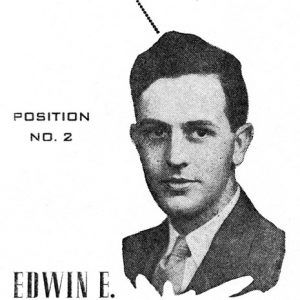 Dunaway Ad
Dunaway Ad 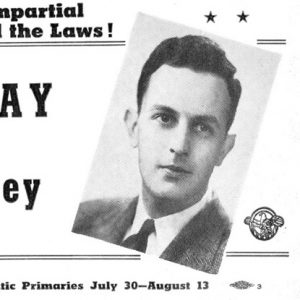 Dunaway Ad
Dunaway Ad  Edwin E. Dunaway
Edwin E. Dunaway  Dunaway and Carnes
Dunaway and Carnes 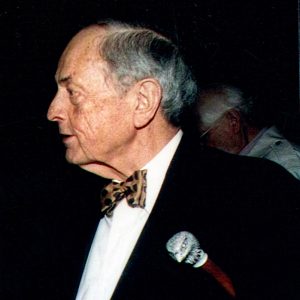 Dunaway at ACLU Banquet
Dunaway at ACLU Banquet 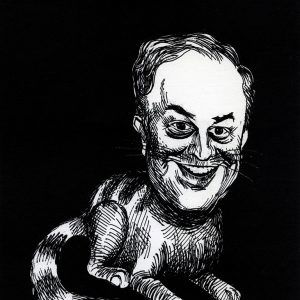 Dunaway Caricature by George Fisher
Dunaway Caricature by George Fisher 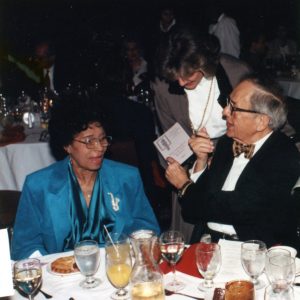 Dunaway and Bates
Dunaway and Bates 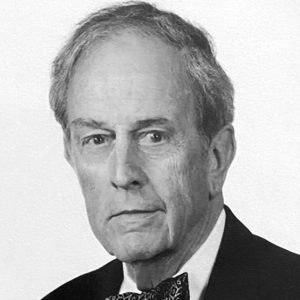 Edwin E. Dunaway
Edwin E. Dunaway  Supreme Court of Arkansas, 1950
Supreme Court of Arkansas, 1950 



Mayor Dunaway was my great-uncle. I still retain his empathy toward ALL citizens. I’m so proud of our family’s history of service!